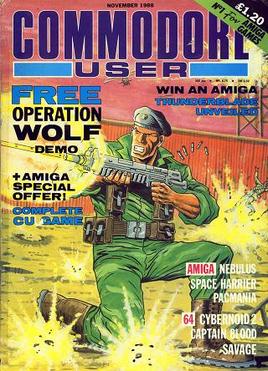
Commodore User, later renamed to CU Amiga, is a series of American and British magazines published by Commodore International.

Datamation is a computer magazine that was published in print form in the United States between 1957 and 1998, and has since continued publication on the web. Datamation was previously owned by QuinStreet and acquired by TechnologyAdvice in 2020. Datamation is published as an online magazine at Datamation.com.

Compute!, often stylized as COMPUTE!, was an American home computer magazine that was published from 1979 to 1994. Its origins can be traced to 1978 in Len Lindsay's PET Gazette, one of the first magazines for the Commodore PET computer. In its 1980s heyday, Compute! covered all major platforms, and several single-platform spinoffs of the magazine were launched. The most successful of these was Compute!'s Gazette, which catered to VIC-20 and Commodore 64 computer users.
Newsfield Publications Ltd was a British magazine publisher during the 1980s and early 1990s.

PC Magazine is an American computer magazine published by Ziff Davis. A print edition was published from 1982 to January 2009. Publication of online editions started in late 1994 and continues as of 2024.
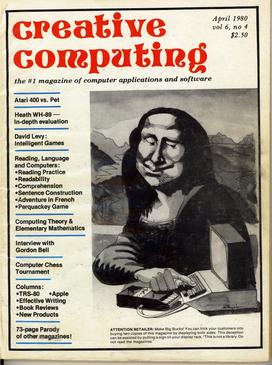
Creative Computing was one of the earliest magazines covering the microcomputer revolution. Published from October 1974 until December 1985, the magazine covered the spectrum of hobbyist/home/personal computing in a more accessible format than the rather technically oriented Byte.
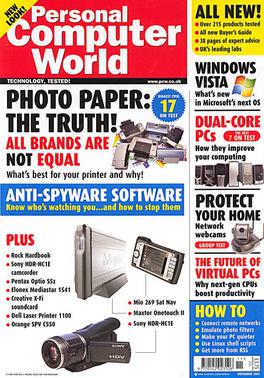
Personal Computer World (PCW) was the first British computer magazine. Although for at least the last decade it contained a high proportion of Windows PC content, the magazine's title was not intended as a specific reference to this. At its inception in 1978 'personal computer' was still a generic term The magazine came out before the Wintel platform existed; the original IBM PC itself was introduced in 1981. Similarly, the magazine was unrelated to the Amstrad PCW.

Computer Weekly is a digital magazine and website for IT professionals in the United Kingdom. It was formerly published as a weekly print magazine by Reed Business Information for over 50 years. Topics covered within the magazine include outsourcing, security, data centres, information management, cloud computing, and mobile computing to computer hacking and strategy for IT management.
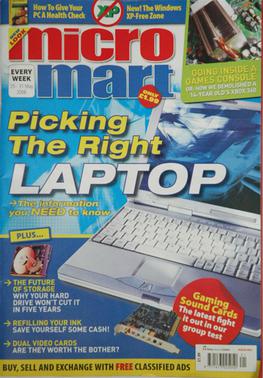
Micro Mart was a weekly computer magazine published in the United Kingdom by Dennis Publishing Ltd. As of 2015, it had a circulation of 5,422. In a letter to subscribers in December 2016 it was announced that the magazine would cease publication with issue No 1445 : "After 30 amazing years of telling it like it is, Micro Mart magazine is logging off."

ANALOG Computing was an American computer magazine devoted to Atari 8-bit computers. It was published from 1981 until 1989. In addition to reviews and tutorials, ANALOG printed multiple programs in each issue for users to type in. Almost every issue included a machine language video game—as opposed to Atari BASIC—which were uncommon in competing magazines. Such games were accompanied by the assembly language source code. ANALOG also sold commercial games, two books of type-in software, and access to a custom bulletin-board system. After the Atari ST was released, coverage of the new systems moved to an ST-Log section of the magazine before spinning off into a separate publication under the ST-Log name.
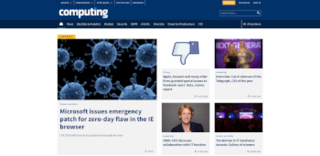
Computing is an online magazine published by The Channel Company for IT managers and professionals in the United Kingdom. The brand announced plans to launch in North America and Germany in 2023.
Bank Street Writer is a word processor for the Apple II, Atari 8-bit computers, Commodore 64, MSX, Mac, IBM PC, and IBM PCjr computers. It was designed in 1981 by a team of educators at the Bank Street College of Education in New York City, software developer Franklin E. Smith, and programmers at Intentional Educations in Watertown, Massachusetts. The software was sold in two versions: one for elementary school students published by Scholastic and a general version from Broderbund.
VideoGames & Computer Entertainment was an American magazine dedicated to covering video games on computers, home consoles and arcades. It was published by LFP, Inc. from the late 1988 until the mid-1990s. Offering game reviews, previews, game strategies and cheat codes as well as coverage of the general industry, VG&CE was also one of the first magazines to cover both home console and computer games. The magazine gave out annual awards in a variety of categories, divided between the best of home video games and computer video games. The magazine featured original artwork by Alan Hunter and other freelance artists.
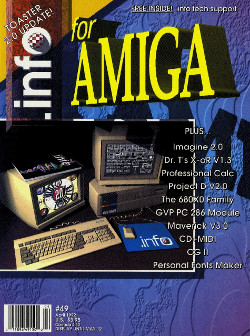
.info was a computer magazine covering Commodore 8-bit computers and later the Amiga. It was published from 1983 to 1992.

80 Micro was a computer magazine, published between 1980 and 1988, that featured program listings, products and reviews for the TRS-80.

Shirrel Rhoades is an American writer, publisher, professor, filmmaker, and the former executive vice president of Marvel Entertainment.

The Computer Paper was a monthly computer magazine that was published in Canada from February 1988 until November 2008. The magazine was originally published by Canada Computer Paper Inc. It was purchased in 1997 by Hebdo Mag International of Paris, France, and then to Piccolo Publishing Ltd of Toronto in 2003. Publication ceased in November 2008 due to declining ad revenues.

Byte was a microcomputer magazine, influential in the late 1970s and throughout the 1980s because of its wide-ranging editorial coverage.
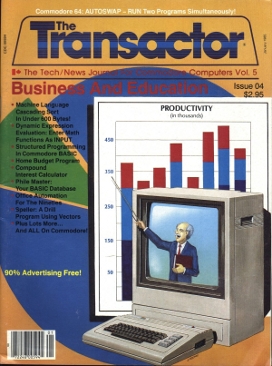
The Transactor was a computer magazine directed at users of Commodore home computers.
















